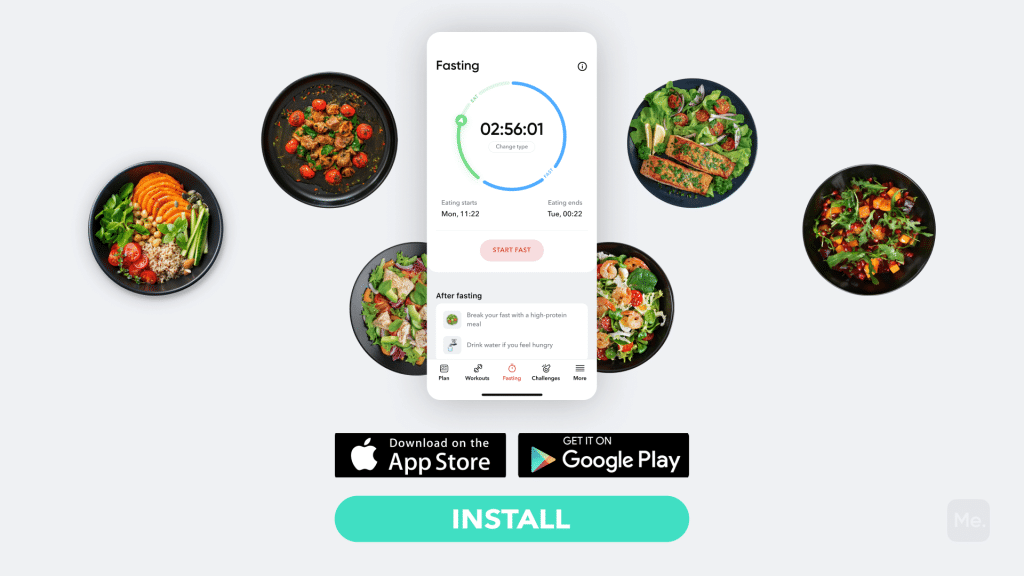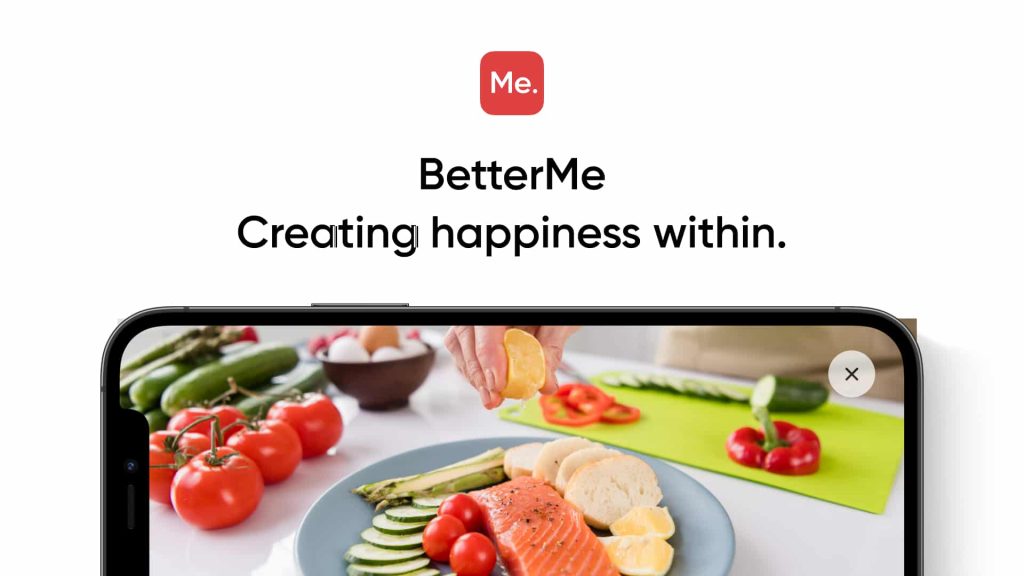Lose 10 Pounds In 10 Days! Shed 5 Pounds In 5 Days! Expert Tips On How To Effectively Lose 1 Pound In 1 Day!
These might be some of the topics and headlines that you have come across when trying to find the answer to, “How can I lose a pound in a day?” However, are these so-called expert tips and tricks the healthiest ways to shed off the excess fat? In spite of the body positive movement and inclusion of plus-size people on billboards, runway shows, and magazines, being overweight or obese is something that most of us are not quite comfortable with. The topic of weight loss bothers many people, with many of us wishing for quick ways to lose weight.
People are searching high and low for the most effective weight-loss diets. What they don’t understand is that most of the time, the diets that promise quick results are actually not that effective and more often than not they work against you. Of course, some people understand that a diet is dangerous right away when they see an extreme caloric deficit or that it limits the variety of allowed food to one or two products. But what about people who are new to the world of dieting? The above-mentioned tips claim to be expert-approved and specialist-recommended, however, are these quick tips and tricks healthy? Can I truly lose 1 pound a day without falling ill?
Can I Burn 1 Pound A Day?
The promise of losing 1 pound a day is extremely alluring. You have to agree that it would be amazing if you could shed 7 pounds in only a week or 30 pounds in a month. But, let’s look the truth in the eyes, even if you don’t know how weight loss works, this sounds sketchy. People who are wondering ‘how can I lose 1 pound a day?’ should instead be asking themselves ‘how can I lose 1 pound a day safely?’, or even better ‘how can I lose 1 pound in a healthy way?’.You should always prioritize your health. That is why before embarking on a diet that claims to help you shed 1 pound a day, you need to figure out whether you can burn 1 pound a day in the first place. Unfortunately, no, you cannot. For you to lose 1 pound of fat (or 0.4 kilograms) a day, you have to burn about 3500 calories (5). As a general rule, women and men require 2000 and 2500 calories, respectively, each day (20). To lose any extra weight, you need to cut about 500 to 1000 calories from your average.
With this, it is clear that an average person, no matter how much they exercise, cannot burn 3500 calories a day to lose 1 pound. After all, you cannot burn what you do not have/consume.
The only people who might have a chance to burn these many calories are professional athletes who consume more than 3500 calories a day (up to 8000 or 12000 calories) to help them train (8). But this too is a small number.
Read More: The 90-Day Diet Plan: The Simplest Way To Lose Weight And Form Life-Long Healthy Eating Habits
How To Lose 1 Pound A Day By Drinking Water?
This is only possible if you are losing water weight and not fat. Water retention, a.k.a. edema or fluid retention is a situation that occurs when you have excess fluid build up inside your body. Water weight is caused by dehydration, eating salty foods, high carb diets, hormonal variations especially during the menstrual cycle, heart and kidney diseases, medication, and physical inactivity (11).
Drinking water is one of the ways whereby you can reverse this situation. Not only does it help with dehydration, but it also enables the kidney to function better, allowing excess water and sodium to be flushed out of your system.
Once you are properly hydrated, and the excess water and salt have been discarded, you can wake up, weigh yourself, and realize that you have lost a pound or two. However, before you start celebrating, note that this one pound is not due to fat loss but rather the loss of water weight (4).
Other ways to reduce water retention include exercise, vitamin B-6, magnesium oxide supplements, water pills (that should be prescribed by a doctor), and reducing your carbohydrate intake.
How To Lose 1 Pound A Day On A Treadmill?
As we have discussed above, it is impossible to shed 3500 calories a day no matter how little you eat or how much you exercise. This also translates to running on a treadmill. Running for endless hours on this equipment will not help you lose 1 pound of fat. It would only lead to extreme exhaustion and dehydration.
However, treadmills are a great way to introduce a bit of cardio and physical activity in your day. If you would still like to work out and lose weight on a treadmill, here is how to safely do it without putting your health at risk (2):
1. Start Slow
If you are not used to walking or running, do not jump on the treadmill and start sprinting. You are most likely to hurt yourself. Instead, take a slow and casual stroll for about 15 minutes on a baseline of 2.5 or 3.5, depending on what you are comfortable with. This will help you build your endurance. If a casual walk does not work for you, choose instead to jog, still at the same baseline.
2. Increase Your Speed
Once you start feeling comfortable with your 15-minute stroll or jog, pick up your pace, and incorporate a brisk walk or sprint.
- Start by strolling/jogging for 3 minutes;
- increase speed and walk briskly or sprint for 1 minute;
- slow down to the initial stroll/jog speed and do this for 1 minute;
- pick up your speed once more for a one-minute brisk walk or jog; and
- keep alternating between your slow and fast speed for 15 minutes.
If you’ve mustered up the courage to crush your weight loss goal, let Betterme take the sting out of this demanding process. Our app will help you restructure your habits, remold your life and crank up your fitness results!
3. Add A Challenging Incline
Running or walking on a flat road or footpath is easier than doing the same uphill. This same concept applies to treadmill workouts. Adding a slight incline is bound to make you work and sweat more before your workout routine is complete.
- After a quick and effective stretch, get on your treadmill and push the incline button to a position where it feels uncomfortable;
- jog or walk briskly for 3 minutes;
- increase your pace and sprint for 1 minute;
- slow down to an easy pace but do not change the incline level; do this for 1 minute;
- pick up your pace once more for a quick 1-minute sprint before slowing down again; and
- alternate between these two speeds and workout for 15 minutes.
Remember to always stretch before and after your workout. Pacing yourself and rest days are also essential. Start slowly and get used to a slower pace before jumping onto the next challenge. Also, be sure to rest every fourth or fifth day of the week. This can prevent injury, and it also gives your body and muscles time to recover.
Once you have built up your endurance, you will find that you can run on this machine for 45 minutes to an hour without needing a break. A moderately intense 60-minute treadmill workout at a 60%-70% heart rate can burn up to 300 to 400 calories (15). This treadmill workout plan and a healthy caloric deficit diet may help you lose up to 1 pound a week.
How To Lose 1 Pound A Day Diet Plan: Is It Safe?
Let us be honest, if you were to google “how can I lose 1 pound a day diet”, you will find numerous sites, YouTube videos, and even books by well-known chefs that claim to know the secrets to shed off 1 pound a day thorough one diet or the other.
However, no matter how exciting this sounds, these suggested diets are quite low in calories, about 800 calories or lower, and bring a lot of harmful effects on anyone who tries them.
What Are Some Reasons Why These Very-Low-Calorie Diets Are Highly Discouraged?
-
Lack Of Medical Supervision
As a general rule, these very-low-calorie diets which promise to have the answer to “how can I lose 1 pound in a day” are used under strict medical supervision. They are usually considered for obese and severely obese patients who have to undergo surgery or fertility treatments. These patients are also closely monitored by doctors (17).
-
Lack Of Proper Nutrition
For most of the suggested diets, people tend to forgo and demonize carbohydrates. No matter what you hear about the ‘evil carbs,’ they are not bad. Your choice of carbs is what needs to change. Our bodies need them to produce energy, and in skipping them, you end up not having a balanced diet. Remember, always choose complex carbs such as beans, pumpkins, and sweet potatoes over simple carbs such as cakes, pies, biscuits, and burgers, among others (14).
-
Lack Of Energy
Consuming as little as 800 calories will not leave you with enough energy to perform your day-to-day duties or do any type of physical activity (18).
Read More: Is 6 Hours Of Sleep Enough To Build Muscle: How Lack Of Sleep Hinders Your Gains
-
Not Sustainable As A Long-Term Solution
Most patients who are put on these highly restrictive diets only do them for about 12 to 16 weeks before they are transitioned into a maintenance plan that includes healthy eating, exercise, and other lifestyle changes (19). This ensures that the extra weight stays gone, and they can live a much healthier life.
It is also because no human adult can survive on such little calories. When most of us start a diet with a goal to lose weight, we hope that at the end of it all, the weight will stay gone. The chances of you gaining back all the extra weight after you are unable to continue with such a restrictive meal plan are quite high.
A normal human being requires 2000 to 2500 calories a day (depending on gender) to maintain their weight. If you lost weight on a dangerous 800 calorie diet, you would need to up your calorie intake by 1200 calories (if you are a woman) to maintain the new weight. Since your body is not used to this much food, you will quickly pile on the pounds, especially if you do not exercise.
-
Gallstones
These are caused by rapid weight loss. Calorie deficit diets force the body to break down fat to use as a source of energy. In turn, this forces the liver to produce more cholesterol, which, once it combines with bile, can form gallstones that are quite painful and require medical attention.
More side effects of these very-low-calorie diets include feeling hungry, feeling low on energy, a dry mouth, constipation or diarrhea, headaches, dizziness, cramps, and hair thinning.
Always consult your doctor before going on any calorie-restrictive diet. As seen, these popular diets tend to cause more harm than good.
The Bottom Line
If you are wondering how you can lose 1 pound a day, please understand that this is something you cannot achieve. You cannot eat as many calories as you need in order to burn enough to lose 1 pound each day of the week. Instead, the best way to lose weight is to aim to lose 1 to 2 pounds a week.
Not only is this quite achievable, but it is also the recommended number of pounds to lose for a sustainable and healthy weight loss journey. This is only achievable through exercise and a clean, calorie-conscious, healthy diet.
As usual, always make sure to do a physical check-up and talk to your doctor or nutritionist before attempting any new diet or suggested workout routine.
Reasons why BetterMe is a safe bet: a wide range of calorie-blasting workouts, finger-licking recipes, 24/7 support, challenges that’ll keep you on your best game, and that just scratches the surface! Start using our app and watch the magic happen.
FAQs
1. How Many Calories Can I Eat To Lose 1 Pound A Day?
All, if not most of us, know that cutting calories is one of the best ways to lose excess weight. However, if you are wondering ‘how can I lose 1 pound a day by cutting down on my calorie intake’, sadly this is not possible.
Average men and women require 2500 and 2000 calories a day, respectively, to maintain their weight. If they need to shed any extra fat, women would be required to eat about 1500 calories per day to lose 1 pound of weight per week. On the other hand, men would reduce their intake to 2000 calories a day to lose the same amount of weight.
One pound of weight is equal to 3500 calories. This means that as an average person, you cannot eat enough calories a day to enable you to burn and lose one pound a day. The only people who can eat up to or more than 3500 calories include marathon runners, competitive swimmers, basketball and football players, competitive cyclists and sailors (8), and some bodybuilders, among others (9).
2. How Can I Lose 1 Pound A Day Without Exercise?
Unless this 1 pound is caused by retaining fluid, which is usually easily reversible, losing 1 pound a day is an impossible feat. No average human can work out enough or go on any kind of calorie deficit that would allow this.
Instead of looking for quick fixes for your weight loss, which are more often than not quite dangerous, opt for a gradual and more sustainable way to lose weight. According to the Centers for Disease Control and Prevention, healthy weight loss means losing about 1 to 2 pounds of fat per week (12).
This requires a calorie deficit of 3500 calories in a given week (1). Weight loss and the sustainability of a healthy weight is a lifelong lifestyle that demands a change in eating habits and exercise. It is not a goal to be reached in a few short days or weeks, then promptly forgotten.
If you are unsure about how to eat healthy for weight loss, here are a few simple tips to get you started:
-
Opt For Complex Carbs Instead Of Simple Carbohydrates
Carbohydrates are not your enemy, as our bodies require them to produce energy. However, the kinds of carbs you ingest could be hurting you rather than helping. An example of ‘good’ or complex carbs includes wholewheat pasta, brown rice, sweet potatoes, squash, and pumpkin (14).
Avoid things such as candy, sugary drinks, syrups, sports drinks, table sugar, fruit juice concentrate, and added sugar products such as baked goods or some cereals (22). Unlike complex carbs, these take a shorter time to digest, meaning that you get hungrier sooner and thus are not a stable source of energy.
-
Eat More Fruits And Vegetables
Even kids know that if you want to stay healthy, you need to eat your veggies. If your goal is healthy weight loss, then fruits and vegetables are your best friends. These two types of food are relatively low in calories while being packed with important nutrients. They are a rich source of fiber which prolongs your feeling of fullness and improves your digestion.
Not only can vegetables and fruits lower blood pressure, reduce the risk of heart disease and stroke, prevent some types of cancer, and lower the risk of eye and digestive problems, but they also keep your blood sugar in check. Hence, keeping your appetite under control. Furthermore, eating non-starchy vegetables and fruits such as apples, pears, and green leafy vegetables may even promote weight loss (16).
Here are the best vegetables to include in your menu:
-
Leafy Greens
Leafy greens are known for their high content of essential nutrients and low caloric value, which makes them one of the best options for a weight loss diet. Including such leafy greens as spinach, kale, collards, swiss chards, and others into your diet will increase the volume of your meals, without significantly adding to your caloric intake. It will make you consume fewer calories without feeling hungry.
-
Cruciferous Vegetables
Another must-eat of any healthy diet! Cruciferous vegetables are rich in fiber and are very filling. They generally contain a decent amount of protein compared to other vegetables. Cruciferous vegetables are also low in calories, which makes them a great candidate for your weight loss diet. Try to eat more broccoli, cauliflower, cabbage, and brussels sprouts if your goal is to slim down in a healthy way. However, beware of the side-effect of consumption of cruciferous vegetables, which is gassiness.
-
Sweet Potatoes
Sweet potatoes are among the best vegetables for weight loss due to various factors. First, they have a lower caloric value than white potatoes, while being a bit richer in fiber than them. Second, they have the ability to shrink fat cells. Third, they are packed with vital nutrients that maintain the proper functioning of your body and ensure your wellness. Fourth, they have a low glycemic index, which makes them a great dietary option for people who suffer from diabetes and pre-diabetes. If these four reasons have not convinced you to include sweet potatoes in your diet yet, then the last one will definitely make you change your mind. Fifth, besides being filling and rich in nutrients, sweet potatoes are also delicious and can make for an ingredient of lots of various dishes, both sweet and salty. You can roast, boil, bake or steam it, it is up to you, however, avoid frying and deep-frying it in oil, as it will only increase its caloric value.
-
Mushrooms
Mushrooms are super low in calories while being filled to the brim with protein, fiber, and other vital nutrients. This makes them one of the most filling foods for weight loss since both protein and fiber are known for their ability to prolong the feeling of fullness. Mushrooms are a great dietary option since they go well with a great plethora of other ingredients and you don’t need to be a restaurant chef to make delicious mushrooms.
-
Cucumber
Cucumber is extremely low in calories and has zero fat, which makes it an excellent weight-loss snack. 90% of cucumber is water, so it has great hydrating properties, which is also very important in the process of slimming. Besides that, it is rich in fiber, which can improve your digestion. The cucumber seeds act as diuretics and help pass urine and flush out toxins. It is usually consumed raw, by itself, or as a salad ingredient. You can also put it in a sandwich or make cucumber water.
Here are the best fruits to include in your menu:
-
Citrus Fruits
Known for their rich contents of vitamin C, citrus fruits are some of the best fruits for weight loss. They are low in calories, and high in antioxidants. Citruses have antibacterial, anticancer, and antidiabetic properties. These colorful fruits vary from sour to sweet and can freshen up your day in any of their forms. You can eat them as a snack, add them to salads, desserts, or smoothies, or use their juice as dressing.
-
Berries
Another rich source of antioxidants and fiber, berries, are your dream snack. You can eat them alone, add them to yogurt, oatmeal, or a salad, make a berry smoothie, or use them as an ingredient of your healthy dessert. Raspberries, strawberries, blueberries, blackberries are all ultimate immunity boosters while being very low in calories.
-
Avocado
Avocado is one of the best plant sources of healthy fats. It is also rich in fiber and water, which is also a plus if you want to lose weight. This fruit is also filled to the brim with various micronutrients, such as folate, vitamin K-1, potassium, copper, vitamin E, vitamin C, and vitamin B-6. It can help lower cholesterol levels and thus reduce the risk of various cardiovascular diseases. It is also a must-eat on a vegan diet. You can eat an avocado as a snack, by itself, or add it to various salads or sandwiches.
-
Apples
An apple a day keeps a doctor away. These delicious fruits are high in fiber and vitamins and relatively low in calories. If you want to obtain maximum benefits from your apple, it is recommended that you consume it with the skin on. You can have an apple as a snack, add it to your smoothie, make an applesauce, or bake them.
Read More: Fruitarian Diet: Is Eating ‘Nature’s Candy’ For Breakfast, Lunch, And Dinner Healthy?
-
Include Fish In Your Diet
Fish is an inseparable part of any healthy diet. That is because fish is a rich source of protein and healthy fats, such as Omega-3 fatty acids which are essential for the maintenance of the proper functioning of your body. Besides that, fish is rich in micronutrients, including zinc, iron, calcium, B vitamins, and vitamin D. Some examples of fish you should try and consume at least twice a week include salmon, trout, cod, herring, tuna, and sardines, among others. The best way to cook your fish is to poach, bake, roast or grill it. You can also eat canned fish as it provides you with the same benefits as fish prepared in any other way.
-
Cut Down On Saturated Fat And Sugar
As you may already know, there are two types of fat, healthy and unhealthy. Healthy fats include mono- and polyunsaturated fats. These fats are essential and promote better health. Unhealthy fats, on the contrary, only increase the risk of various chronic diseases, such as obesity, diabetes, and cardiovascular disease. Unhealthy fats include saturated and trans fats. Saturated fats are found in foods like butter, ghee, cakes, pies, sausages, bacon, cured meats, and cheese, among others (10).
Instead, swap these out for options such as oily fish, avocados, and vegetable oils. As for sugar, it has been linked to cases of obesity and tooth decay. That is why it is recommended that you cut your consumption of added sugars and avoid various sweets, and sugary drinks, such as sodas, energy drinks, and store juices. These can offer mostly empty calories which will increase your caloric intake, providing you with little to no nutrients.
-
Reduce The Consumption Of Salt
It is no secret that salt makes food taste better; however, there are some bad and even life-threatening risks of too much sodium. Some life-threatening effects include high blood pressure, higher risk of a heart attack, stroke, or heart disease.
Concerning our weight and weight gain, it has been suspected that salt may make one opt for more fatty foods in his/her diet. Sodium also blunts the biological mechanisms that tell us when to stop eating, thus leading us to eat more than we should (13).
-
Incorporate Exercise In Your Life
The best way to lose weight is to eat right and work out. Exercising ensures that we burn off any extra calories that may turn into fat, leading to weight gain. However, remember that you must first consult with your doctor before starting a new exercise regime.
Read More: Resistance Training For Weight Loss: How To Boost Your Weight Loss Goals Through Strength Training
-
Watch Your Calorie Intake
Calorie counting is discouraged by some, while others swear by it. When you start your weight loss program, it might be a good idea to track your calorie intake. This can help by:
- Letting you know how much you are consuming at the moment and how much you need to cut to get to your desired weight.
- It takes into consideration your lifestyle (sedentary, moderately active, or active) before suggesting the number of calories to consume to lose weight.
- It keeps you accountable to yourself and your goals.
If you are not sure how many calories you should be eating, be sure to consult your doctor or a certified nutritionist, and they can help you figure it out.
Please note that these steps are ways to help you gradually lose weight and keep it off in the long-run. While they are not quick fix steps, they are guaranteed to be worth it.
3. If I Weigh 230 Pounds How Can I Lose 1 Pound A Day?
Like we have stated above, losing one pound of fat a day is impossible. If you weigh yourself between today and tomorrow, and you find that you have lost a pound or two, this is just lost water weight and not actual fat loss.
Before you go trusting any diet and/or fitness routine that promises to help you lose one pound a day, you have to educate yourself first on some effects of rapid weight loss. Do not trust any master cleanse, very-low-calorie diets (VLCDs), creams that promise to melt your fat from the outside in, devices that will vibrate and somehow burn fat, or any diet pills and supplements.
4. What Are Some Side Effects Of Losing Weight Too Fast?
-
Loss Of Muscle Mass
In 2014, a study revealed that most of the rapid weight loss found in participants who ate a very low-calorie diet of 500 calories a day was a loss of muscle mass instead of fat loss. 25% of the participants ate just 500 calories a day, while 22 others ate about 1250 calories a day.
After about 12 weeks, all participants had lost about 19 pounds. However, for those on the very-low-calorie diet, 18% of their overall weight loss was from the fat-free mass as compared to 7.7% of the fat-free mass lost by those eating 1250 calories a day (7).
-
Liver Disease
Non-alcoholic steatohepatitis is a type of fatty liver disease that has been found in obese patients who undergo a Roux-en-Y gastric bypass or people with malnutrition. Malnutrition is a side effect of fasting or being on a very low-calorie restrictive diet. This non-alcoholic steatohepatitis can lead to death and has required patients to get liver transplants (3).
-
Loose Skin
Our skin is elastic. This is what allows it to expand around the tummy for pregnant women. It also expands to accommodate our bigger size and shrinks back down once we lose weight. However, rapid weight loss does not give the skin ample time to adjust and shrink with extra mass loss.
While extra skin is not necessarily a health concern, it can be quite unsightly. This causes a lot of mental anguish and a loss of self-esteem in a person. It can also cause chaffing in places where it folds onto or rubs against itself. Chaffing can lead to skin infections.
When the loose skin refuses to shrink even after two years, surgery might be the only option to get rid of it. Anyone with loose skin after weight loss can consider surgical options such as an abdominoplasty (a.k.a. a tummy tuck), a thigh tuck for any loose skin around the thighs, or a body lift which is basically an all-round cosmetic fix for whatever saggy skin you might have (21).
-
Malnutrition And Electrolyte Imbalances
Malnutrition is caused by a lack of enough protein in any restrictive weight loss diet. On the other hand, electrolyte imbalances are due to a lack of sodium, potassium, calcium, bicarbonate, magnesium, and chloride.
Electrolyte imbalances can cause issues such as irregular heartbeat, twitching, changes in blood pressure, convulsions, seizures, excessive tiredness, numbness, muscle spasms, and confusion (6). They can even be life-threatening.
Get your personalized
meal plan!
DISCLAIMER:
This article is intended for general informational purposes only and does not address individual circumstances. It is not a substitute for professional advice or help and should not be relied on to make decisions of any kind. A licensed physician should be consulted for diagnosis and treatment of any medical conditions. Any action you take upon the information presented in this article is strictly at your own risk and responsibility!
SOURCES:
- 10 Ways to Lose 2 Pounds a Week (2019, verywellfit.com)
- A one-month treadmill workout to get you back in shape (2109, nbcnews.com)
- Aggressive non-alcoholic steatohepatitis following rapid weight loss and/or malnutrition (2017, ncbi.nlm.nih.gov)
- Can You Lose One Pound in One Day? (n.d., livestrong.com)
- Counting calories: Get back to weight-loss basics (2020, mayoclinic.org)
- Everything you need to know about electrolytes (2017, medicalnewstoday.com)
- Fast Weight Loss May Mean Muscle Loss (2014, webmd.com)
- How Many Calories Do Olympic Athletes Need? (2019, npr.org)
- How Much Protein Is Too Much in Bodybuilding? (2019, verywellfit.com)
- How to eat less saturated fat (2020, nhs.uk)
- How to lose water weight naturally (2018, medicalnewstoday.com)
- Losing Weight (2020, cdc.gov)
- Salt could lead to weight gain by driving fatty food intake (2016, medicalnewstoday.com)
- Slideshow: Your Guide to Eating Healthy Carbs (2020, webmd.com)
- Treadmill Walking Weight Loss Workout Plan (2020, verywellfit.com)
- Vegetables and Fruits (n.d., hsph.harvard.edu)
- Very low calorie diets (2019, nhs.uk)
- Very Low-Calorie Diets: What You Need to Know (2018, webmd.com)
- What Is a Very Low-Calorie Diet? (2020, verywellfit.com)
- What should my daily intake of calories be? (2019, nhs.uk)
- What to Do About Loose Skin After Weight Loss (2019, verywellfit.com)
- What to know about simple and complex carbs (2019, medicalnewstoday.com)

























